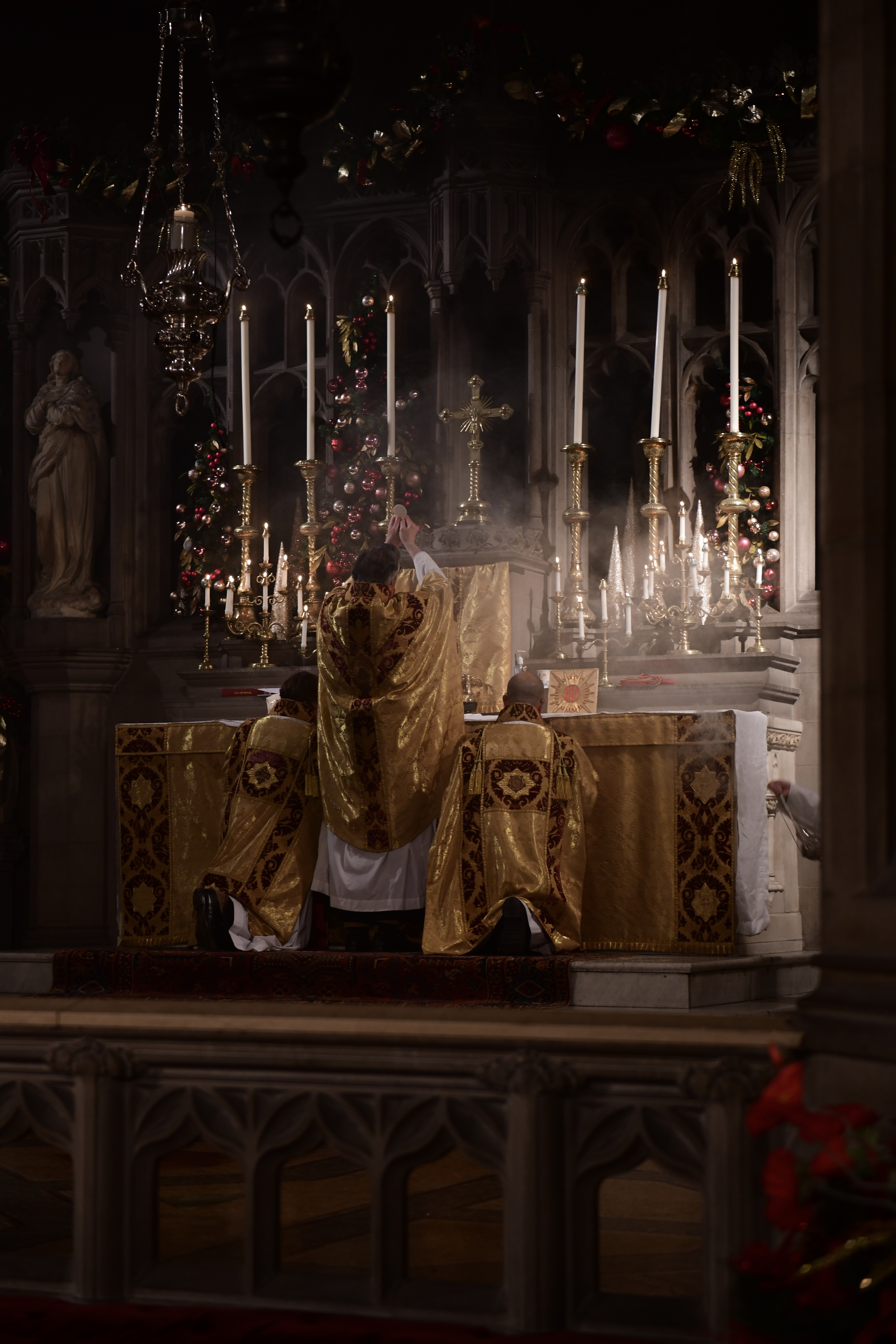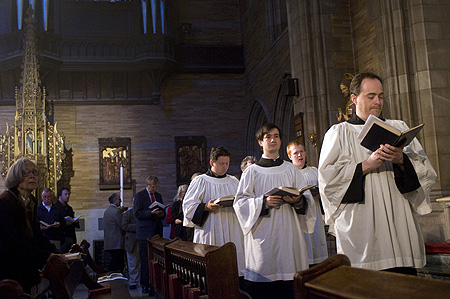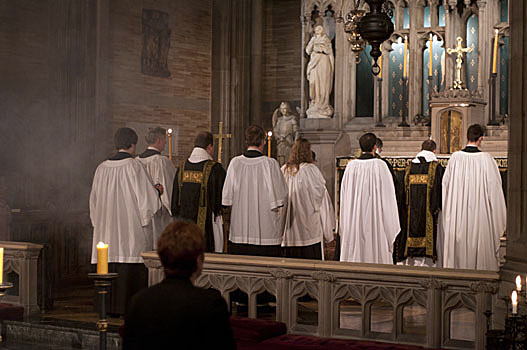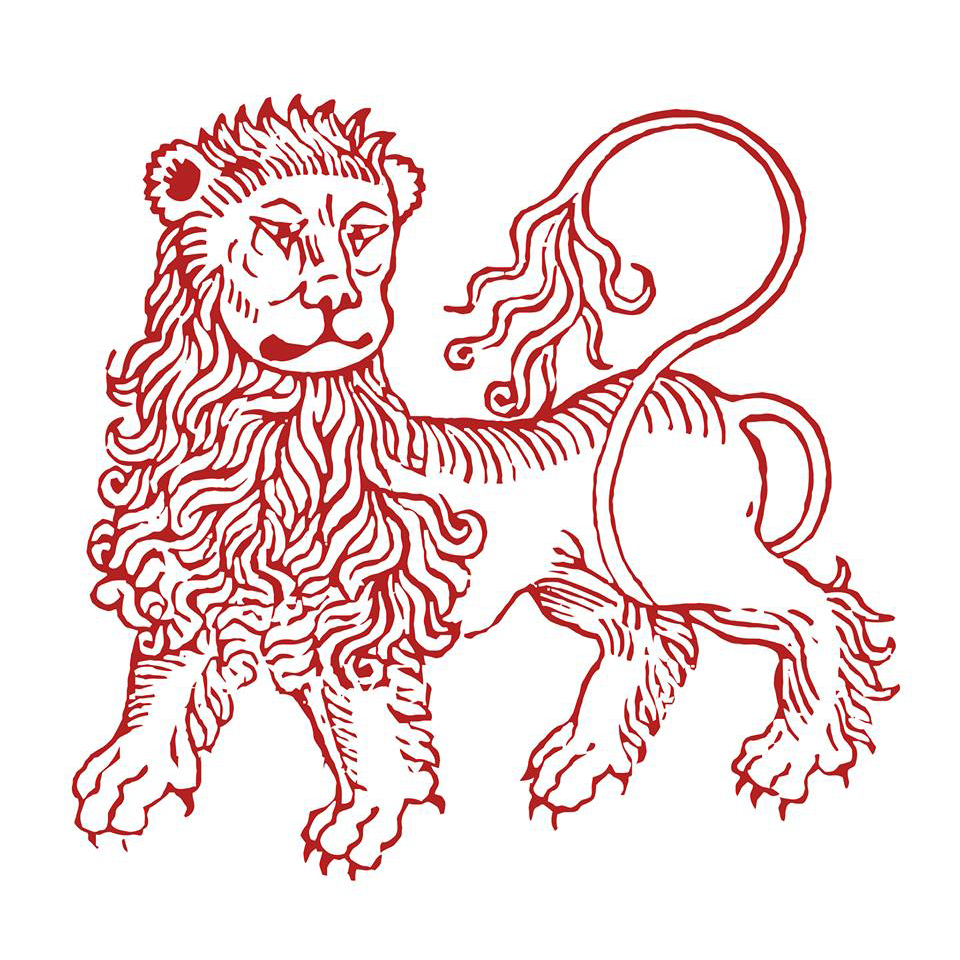Frequently Asked Questions
For several decades the final part of the General Ordination Examination that most candidates for Holy Orders in the Episcopal Church take has consisted of some form of “Coffee Hour Questions.” That is to say, the kinds of questions people may ask the clergy at coffee hour after a service. Anticipating some of the things that you may be wondering, the Rector has provided below answers to some questions that you may have about the worship and ministry at St Ignatius. If you have other questions, please do not hesitate to speak with one of the clergy.

Where do our customs come from?
Why do we call ourselves “Anglo-Catholic”?
Is everyone supposed to make all these gestures?
Why do we march around so much?
Who are all those people at the Altar?
And what are they wearing?
Why do we use incense in the services?
Where does the tradition of passing the Peace before Communion come from?
Can I receive Communion here?
What does all this have to do with serving people in the world?
Where do our customs come from?
Our liturgy is according to the use of the Book of Common Prayer of the Episcopal Church and is supplemented by materials drawn from the richness of the Anglican and Western Catholic traditions. Worship at Saint Ignatius of Antioch reflects our foundation in the tradition of the Oxford Movement. Although there had always been a strong High Church party in the Church of England and in the Episcopal Church, the Oxford Movement began in 1833 when John Keble preached a sermon, “National Apostasy,” that called the English nation to account for its drifting away from its Christian traditions. Keble and his associates sought authority from the writings of the Early Church and emphasized the importance of the early creeds and the reality of the sacraments. The next phase of this High Church revival, led by John Mason Neale and others, which was in full swing around time our parish was founded in 1871, advocated a restoration of the forms of Catholic worship, devotion, and spirituality which originated in ancient and medieval times and were compatible with the Book of Common Prayer, but had fallen out of use since the Reformation. The recoveries, which began with matters as simple as having two candlesticks and a cross on the altar, developed to include a more elaborate ceremonial based upon the pre-reformation liturgies, and reintroduced incense, processions, private confession, and devotions to Mary, among other practices.
Why do we call ourselves "Anglo-Catholic"?
The word “catholic” comes from a Greek word meaning “universal.” The Catholic Church literally means "the Church that is according to the whole," and it was, in fact, Ignatius of Antioch himself who first used the term in this way (Smyrnaeans, 8:2). Catholic also refers to Christians, especially in the West, who consider themselves to be in continuity with, and who practice the faith and traditions that have come down from the early Church through the pre-Reformation Catholic Church. "Anglo-Catholics" are Episcopalians and other members of the world-wide Anglican Communion who, following the Oxford Movement and their successors, believe (and practice) that this, universal and inclusive Western Catholic tradition is continued in the theology and liturgy of the Book of Common Prayer and the life of the Anglican Churches.
Is everyone supposed to make all these gestures?
Not unless you want to. These gestures, the Sign of the Cross, bowing, and other actions, are all acts of personal piety. Since traditional Catholic worship involves all our senses, they are also ways of worshipping with our bodies. They are not requirements of our liturgy or "tests" for membership. If you feel comfortable with them, use them by all means. If you don’t feel comfortable using them, don’t. If you have questions, one of the clergy would be glad to explain more about these customs to you.
Why do we march around so much?

Processions are liturgical acts. They are not simply a way to get the ministers in and out of the service. They are ancient acts of prayer and supplication and in may ways symbolic of our life’s pilgrimage. We make at least three different kinds of processions. On regular Sundays at Solemn Mass throughout the year and outside of Lent, we begin our worship with a Holy Water Procession, during which the celebrant sprinkles the people, altars, and images with Holy Water as a way of preparing for the Mass. On major feasts and after evensong on Sundays we make a solemn procession to a particular location in the church—perhaps one of the shrines or the font or the rood—to offer prayers appropriate to the day or season. In Lent we sing the Great Litany in procession immediately before the Solemn Mass as an act of supplication, offering the prayers and concerns of our life to God. The people are invited join with the Sacred Ministers in the two latter processions. There are also special processions in Holy Week: on Palm Sunday, in which the ministers and people carry palms in procession to commemorate Jesus’ triumphal entry into Jerusalem; on Maundy Thursday, when the Celebrant carries the Blessed Sacrament (the consecrated bread and wine) to the Altar of Repose so that it may be kept safe for the Communion on Good Friday; and at the Great Vigil of Easter when the Deacon carries the newly lit paschal candle, symbolising the light of Christ, from the place where the new fire was kindled into the Sanctuary.
Who are all those people at the Altar?

Solemn Mass is a pageant with many players. The purpose of the whole action is to worship God “in the beauty of holiness” and to celebrate the sacrament in which Christ becomes present with us in the bread and wine. Each person who serves at Mass has a part that helps in this process. The priest stands in the person of the whole Church gathering the people and presiding at the Eucharistic table. A deacon assists, reads the Gospel, serves at the Communion table, and gives the dismissal. A sub-deacon, always a lay person, reads the New Testament lesson and also serves at Communion. These are the “three sacred ministers.” There are assistants, called acolytes (which means helpers), who help the priest and deacon in their work with setting up for and distributing Holy Communion by washing the priests hands, doing other odd jobs, and carrying the Cross and candles in procession. There is also a server, called the thurifer, who tends the incense and swings the censer (also knows as a thurible) and a server who looks after the whole proceedings called the Master of Ceremonies. Each person who serves at the altar, ordained and lay, is representative of the congregation as a whole.
And what are they wearing?
Here we wear the traditional, historic vestments that have come down to us from the ancient church. The sacred ministers wear nothing more and nothing less than versions of late-antique Roman street clothes. The alb (the white robe with close fitting sleeves) and amice (which is a piece of cloth worn around the neck to protect the garment from sweat), secured with a rope girdle, replaced the toga as a basic garment. Over this people wore a tunic (which comes down to us as the dalmatic worn today by deacons and sub-deacons), and what is basically a poncho (then called a paenula or planeta, now called the chasuble, and worn today by the presiding priest) as overcoats. The stole, worn over both shoulders by a priest probably originated as a badge of office and the deacon’s stole (worn over the left shoulder) and maniple (worn on the wrist by all three sacred ministers) seem to be vestigial server’s napkins, a reminiscence of when the Eucharist was really a meal. These historic clothes are not made-up fancy dress, but rather serve as a means of connection through the centuries with all the Christians who have gathered to celebrate the Sacraments. The colors we wear developed only in the last thousand years and reflect local customs that have become more universal. The sequence of color helps us identify and symbolize the seasons of the Christian year.
Why do we use incense in the services?
The tradition of using incense in the liturgy dates back to ancient Hebrew worship, as recorded in the Psalms: "Let my prayer be set forth in Thy sight as the incense" (Psalm 141:2). As this verse suggests, incense symbolizes the prayers of the faithful rising up to heaven as the smoke rises to the rafters. Incense also appears in the Bible in association with visions of the Divine, most notably in the book of Isaiah and the Revelation to St John. The smoke itself is associated with purification and sanctification; thus, we cense the consecrated elements of the Eucharist to show that they are set apart, and when we cense people we are not only symbolically "purifying" them but also acknowledging that they are set apart by their Baptism. Worshipping with incense is another way in which traditional Catholic worship engages our senses.
Where does the practice of passing the Peace before Communion come from?
In the Exchange of the Peace, Christians are reconciled with each other before we take Christ’s body into our body and are ourselves changed into God’s new creation. Most Episcopalians are used to exchanging the Peace after the Prayers of the People and Confession. This placement has greatest antiquity. By the time of Ordo Romanus I, a manual of directions for carrying out solemn Pontifical Mass at Rome in the seventh century, the Peace was exchanged at three points in the service, at the Entrance (preserved in the Medieval English rites), before the Offertory (the current placement in the 1979 Book of Common Prayer), and at the breaking of the bread as a Fraction Anthem (where it occurred for a second time in the English rites, where it became fixed in the Roman rites). This later position is where the Peace is passed at Saint Ignatius, a placement permitted in the rubrics of the 1979 Prayer Book on page 407.
Can I receive Communion here?
All baptized Christians are welcome at our Altar. The Episcopal Church teaches that all persons, regardless of age or from what denomination they come, who have been baptized with water “in the name of the Father, and of the Son, and of the Holy Spirit,” are welcome to receive the Sacrament in this Church. For more on Baptism and Holy Communion, click here.
What does all this have to do with serving people in the world?
From the late nineteenth-century, the High Church movement has also been associated with concern for social issues. Following the teaching of Bishop Charles Gore (1853-1932), generations of Anglo-Catholics—from Stewart Headlam (1847-1924) to Percy Dearmer (1867-1932) to Archbishop William Temple (1881-1944) to Conrad Noel (1896-1942) and Kenneth Leech (1939-)—have been brought-up to believe that Catholic practice is not only compatible with concern for the poor and disenfranchised, but that one flowed from the other. Beauty is a manifestation of God and all people are created in the image and likeness of God. All people have value, all people deserve good working conditions and living wages, all people deserve education, all people deserve to be treated as beloved children of God. All people deserve to experience the beauty of God, the beauty of holiness when they gather to worship and receive the Sacrament that sends them back into the world as the Body of Christ. The ancient and beautiful Catholic tradition in which all people from all walks of life are to be included reflects the ministry of Jesus who broke bread with rich and poor and transformed lives.
